Annual Talo Tsechu is held in Talo Dzong in Punakha. The three-day festival is well known for well-choreographed mask dances and traditional dances by Talo villagers. The traditional dances are with the three Songs (Zhungdra) Samyi Sala, Drukpa Dungey, and Thowachi Gangi Tselay performed on first, second and final day respectively. Scattered along the slopes the Talo village is one of the beautiful villages in Punakha.
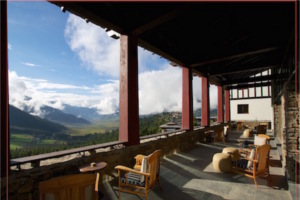
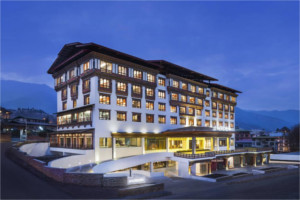
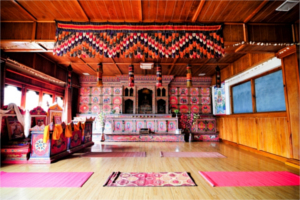
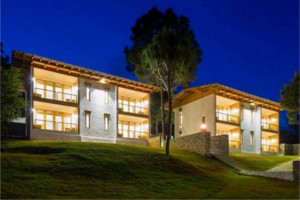
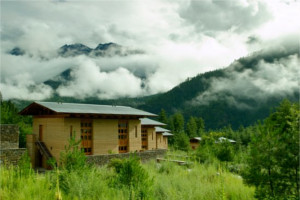
Our representative will receive you at the airport and then transfer to a restaurant for lunch. Paro is at altitude 7000 feet or 2133m. Paro valley is a small yet beautiful home to many of Bhutan’s oldest monasteries and temples. The country’s only international airport is in Paro. The valley is also home to mount Jhomolhari (7300 meters), the second highest unclimbed mountain in the world situated at the northern end of the valley whose glacial water forms the Paachu, the main river flowing through the valley.
Drive 40 min to Thimphu (capital city). Visit around the town in the evening and transfer to the hotel.
Overnight at Thimphu.
Breakfast
Visit the National Memorial Chorten (Stupa), built in memory of the 3rd King of Bhutan. Visit the Art School and Changangkha Lhakhang (a temple built in 12th century by a Tibetan saint).
Lunch
Visit the National Takin Reserve Center to see Takin, the national animal of Bhutan and Trashichhodzong (fortress of glorious religion). Trashichhodzong in its current form was completed in 1968 and it houses the throne room of His Majesty the King of Bhutan. It is also a center of monastic body and houses main secretariat building. The majestic Dzong located along the Wangchu (Thimphu River) has a Tendrel Thang which is the venue for Thimphu Dromchoe and Thimphu Tsechu, the annual Thimphu Festival where thousands of people fill the courtyard to witness the mask dances, traditional dances, and many more.
Visit Semtokha Dzong, five miles from main Thimphu town, the Dzong is considered to be the first ever built by Zhabdrung Ngawang Namgyel in 1629, therefore the oldest fortress in Bhutan. Located on a ridge overlooking the entire valley, the Dzong houses a chapel for protective deities Yeshe Goenpo (Mahakala) and Palden Lhamo of Bhutan.
Visit Buddha Dordenma, the largest standing Buddha Statue in the world. Buddha Dordenma is 54 meters (177 ft) tall, one of the largest Buddha Shakyamuni statue in the world, fulfilling a prophecy that mentioned a large statue of either Guru Padmasambhava, Buddha or of a (Vajrakilaya) Phurba would be built in the region to bestow blessings, peace, and happiness on the world, the statue erection was started in 2006 and completed in 2015. The statue is mentioned in the ancient Terma of Guru Padmasambhava himself dated from approximately the sixth century, the prophesized Terma was recovered some 672 years ago by Terton Dorje Lingpa (1346) and 104 years and after 568 years ago by Terton Pema Lingpa.
Drive across the spectacular Dochu La Pass (3100m) to scenic Phobjikha Valley. The scenery is stunning and fresh, as the winding road climbs and descends with several stops in between for views. Drive back to Punakha via Wangduephodrang.
Visit Chimi Lhakhang, a monastery built by Lama Drukpa Kuenley (also known as the Divine Madman or Mad Monk), which is a pleasant, easy 20 minute walk across paddy fields. It is believed that childless women who visit the temple will conceive after receiving a “wang” (blessing) from the resident monk.
Descend to Punakha Valley (1280m).
Punakha valley served as the capital of Bhutan till 1955 until it was shifted to Thimphu. The Punakha Dzong is still the winter seat of Je Khenpo (Chief Abbot) of the monastic body as the place has a temperate climate with Phochu and Mochu Rivers flowing through the fertile fields of the valley.
Visit Punakha Dzong.
Punakha Dzong or Pungthang Dewa Chenpai Phodrang, the palace of bliss was built in 1937 by Zhabdrung Ngawang Namgyel. The second oldest Dzong is religiously and architecturally significant to Bhutanese as it houses several sacred relics, scriptures, statues and is the place where the first king of Bhutan was crowned in 1907. Punakha Dzong is also famous for Punakha Drupchen where the 17th-century battle scene with Tibetan invaders are recreated and is followed by Punakha Tsechu where grand Thongdrel of Guru Rinpoche is unfurled with costumed mask dances and rituals.
Overnight at Punakha.
Depart early morning to the Talo Gonpa to witness festival all day long.
The three-day Talo Tshechu is well known for its colorful mask and Atsara dances. An equally popular attraction, which has a deeply religious and historical significance, is the Zhungdra (classical dance) by the Talo dance troupe. The three songs of Mani Sum, which comprise the Zhundra set, are performed as the closing item on each day of the three days of the Tshechu. The three Songs, Samyi Sala (performed on the first day), Drukpa Dungey (second day) and Thowachi Gangi Tselay on the final day, are the pride of the Talo community.
Drive back to Punakha in the evening.
Overnight at Punakha.
Unfurling of Thongdrel early in the morning and then the different mask dances and folk dances will take place at the festival.
In the afternoon hike to Khamsum Yulley Namgyel Chorten through fields of vegetables, rice paddies, and tiny hamlets. The Chorten holds very special significance as it was consecrated in 1999 and dedicated for the wellbeing of the former Crown Prince – today’s current King Jigme Khesar Namgyel Wangchuck.
Drive back to Punakha in the evening.
Overnight at Punakha.
Depart from Punakha early morning for your transfer westwards to the Paro Valley once again traversing Dochu La pass (3100m) and arriving at Paro town in time for a late lunch at one of the local restaurants.
In the afternoon enjoy an orientation tour of the major features in Paro town including Paro Dzong with its cantilever bridge and the National Museum in Paro to view the fine collections of ancient Thangkha paintings, textiles, weapons, and other artifacts. Visit along the main streets which offer good shopping for jewelry and handicrafts in the town.
Overnight at Paro.
Early breakfast
Take a pilgrimage hike to the very revered Taktsang Monastery, also known as Tigers Nest. All Bhutanese Buddhists strive to make this pilgrimage at least once in their lives and each step they take on the trail counts towards credits for their future. Choose between a 1.5 hour round trip hike to the Monastery viewpoint or a longer 5 hour and more strenuous hike into the Monastery itself. Tigers Nest clings impossibly to a cliff of rock at 800 m above the valley floor and where Guru Rinpoche flew on the back of a tigress to subdue the local demons followed by 3 months meditation in a cave still visible in the monastery. In 1998 the monastery was seriously damaged by fire and has since been painstakingly reconstructed to its original condition and consecrated by the 4th King in 2005.
Savor a Bhutanese cuisine at the Taktsang Viewpoint cafe before finishing your hike. Next, visit the nearby Kyichu Lhakhang – one of Bhutan’s oldest and most beautiful temples boasting an orange tree that perpetually bears fruit.
Overnight at Paro.
daily tariff:USD 250 Per person per night
surcharges:
Solo Traveller: USD 40 per night
Dual Traveller: USD 30 per person per night
Three travellers and above: surcharges not applicable
Visa fees: One time payment of USD 40 per person.
daily tariff:USD 200 Per person per night
surcharges:
Solo Traveller: USD 40 per night
Dual Traveller: USD 30 per person per night
Three travellers and above: surcharges not applicable
Visa fees: One time payment of USD 40 per person.
A minimum of 3 star accommodation (4 & 5 star may require an additional premium).
All meals
A licensed Bhutanese tour guide for the extent of your stay
All internal transport (excluding internal flights)
Camping equipment and haulage for trekking tours